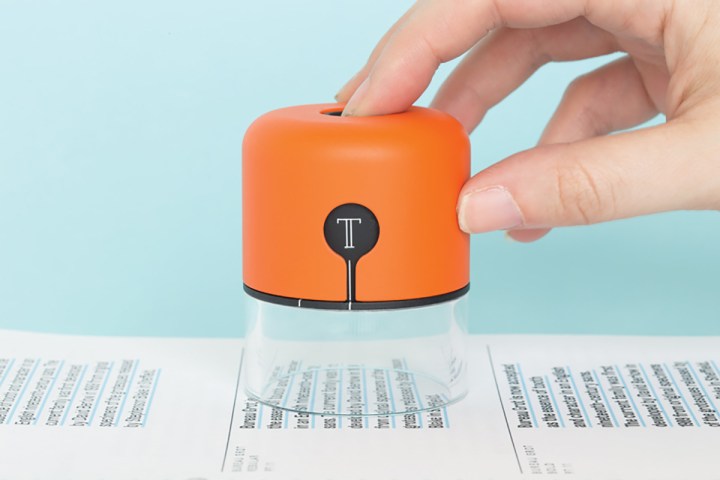
Ask any designer how they would normally hope to get colors or fonts into their computer? Chances are it would involve snapping a photo with their phone or camera and loading it onto their computer. But a student at the Royal College of Art, Fiona O’Leary, decided that was inefficient and complicated, which led her to develop Spector, a tool designed to make capturing printed fonts and colors for use in Adobe’s InDesign easier than ever.
Spector is a small device that houses a built-in camera with a mode for capturing text and a mode for capturing color. The user selects what they are trying to capture, places Spector over the color or font, and presses the lone button located on the top of the unit. It is still just a prototype, but as you can see demonstrated in the video — it works.
Once a user presses the button, Spector uses some built-in algorithms to identify shapes and color values, before sending the information to a database for final identification and validation. If the unit is connected to a computer, the user can select text or objects and have Spector automatically match the digital text or color with what it detects from the printed medium. This saves crazy amounts of time, and once fleshed out, could be a game-changer for designers.
Currently, Spector only identifies seven typefaces, but the plan is to continue growing the identification database to make it compatible with a wider range of fonts. The plan is to make the product into a tool for education, just as much as one for getting work done. Unfortunately, you will have to wait quite a while before you see any of these in stores. O’Leary is not in any hurry to bring the product to the masses, instead focusing on refining and making it more accurate.
Until that time, enjoy your design-related cell phone snaps and treasure them knowing that their days are likely numbered.


